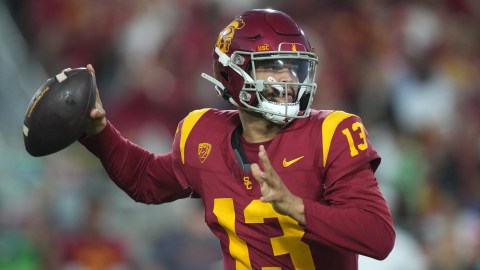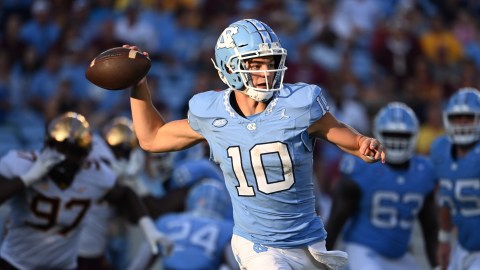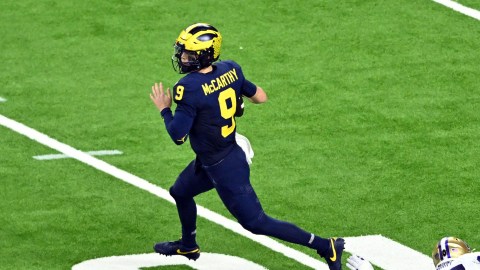 BOSTON — The irreparable bodily and cognitive damage NFL players face every time they step out onto a football field has always been seen as ‘what they signed up for.’ But did they know they might actually be signing up for a death sentence?
BOSTON — The irreparable bodily and cognitive damage NFL players face every time they step out onto a football field has always been seen as ‘what they signed up for.’ But did they know they might actually be signing up for a death sentence?
The game of football has evolved over the decades since its inception in the early part of the 20th Century, and it just continues to grow. The speed of players, the ferocity of some hits, the vicious tackles and, of course, the blows to the head are all part of the game’s evolution. But those elements are also of great concern to the long-term health and well being of these players.
Yet, it continually seems that the NFL is just not doing enough counter the brutal and lasting effects many players suffer during their playing careers, and even in their post-football lives.
NFL commissioner Roger Goodell addressed the safety issue and the NFL’s plan to better protect their employees — that’s right, they are employees — during a lecture at the Harvard School of Public Health on Thursday. But while Goodell spoke openly and seemingly unconstrained to a room full of hundreds of students, faculty and media members, the questions about player safety were never fully quelled nor the growing concerns eased.
Goodell did his best to reduce the pressure from the situation by acknowledging the clear elephant in the room almost from the start.
“The game of football is thriving, it’s more popular than ever. But we’re at a crossroads,” Goodell said of the issue of player safety. “I can say in no uncertain terms that [concussions are] our biggest challenge. We want players to enjoy long and prosperous careers. ”
The average career for an NFL player is about 3 1/2 years, which means that either Goodell’s definition of the phrase “long and prosperous” is skewed or that the NFL is merely not meeting its own expectations. But then again the issue isn’t necessarily the length of players’ careers, but rather their safety on the football field.
The issue of health and safety in football took center stage over the weekend, as seven players were forced from NFL games with concussions. Some of those players, Jay Cutler and Alex Smith specifically, even remained in the game for a few plays after the injuries occurred.
Smith’s ability to throw a touchdown with what 49ers head coach called “blurred vision” should never have taken place. And such an occurrence is a prime example of how the NFL is failing to properly care for its players.
Goodell did make the point that without full disclosure from players, the medical staffs wouldn’t be able to properly enforce the policies saying, “If they don’t tell medical professionals that they’re showing symptoms, how are we going to know to take them out?” But there has to be a more efficient system for trainers or coaches to know whether a player needs to be removed from the game.
To his credit, Goodell has taken on the player safety issue like no commissioner before. In less than a year of reigning on the NFL throne, so to speak, Goodell brought in third-party experts, instituted brain baseline testing, standardized concussion reporting, created preventative measures for such injuries and even established a “whistle blowing hotline” for players who might feel pressure to return to the field in face of a concussion.
In his lecture, Goodell just padded the stats on his resume, referencing research and developments being made to equipment to better handle the impact of hits. He also mentioned the adjustment of rules, such as moving the kickoff up to the 35-yard line to help avoid such high-speed collisions. Goodell even went on to discuss the NFL’s partnership with the U.S. military in “working to make soldiers and athletes safer.”
All of those are really nice and productive measures for the league. But how exactly is this going to impact the players currently suffering the lingering effects of concussions and potentially life-altering injuries or mental conditions down the road? Because if guys are just ignoring the safeguards and restrictions put in place, like Smith and Cutler did on Sunday, then how do we expect to ever eliminate or more realistically decrease the severity and frequency of such injuries?
The answers obviously aren’t clearly written on a tablet somewhere, instructing which commandments Goodell needs to enact to make for a safer league. Otherwise, this debate wouldn’t even be happening — but more needs to be done.
The game of football is a violent and contact-driven sport. That is part of what makes the game so great in the first place. The pure adrenaline-filled moments. The gladiator-like battles that go on between defensive end and offensive tackle, running back and linebacker or receiver and defensive back are what make for such an entertaining and impressive product. But where is the line drawn between gladiator and human being?
The current measures Goodell and the NFL have taken are a good step in the right direction. But more needs to be done. Goodell’s acknowledgement that “change doesn’t inhibit the game. It improves it,” is encouraging. Sure. But at some point the results need to meet all this chatter.
Fact is, talk is cheap. No matter how eloquent it may sound.
Have a question for Luke Hughes? Send it to him via Twitter at @LukeFHughes or send it here.



